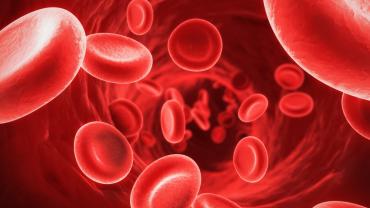
These days it seems like the waiting rooms of functional and conventional medical practices alike are filled with patients anxious to get help for what they’re convinced is hypothyroidism. Desperate to do something to relieve their unpleasant and sometimes debilitating symptoms they want the full thyroid panels they’ve read about online during their frantic searches to help themselves: TSH total and free T3 and T4 reverse T3 TPO and thyroid antibodies. And certainly when the numbers and/or the preponderance of symptoms indicate a sluggish thyroid treatment with dessicated thyroid or thyroid hormone may be warranted. However even more important is to try and identify why the thyroid is not generating adequate hormones or why the tissue-level conversion of T4 to T3 is not happening optimally. After all even if a patient feels better upon taking oral thyroid hormone this does nothing to address the underlying cause of dysfunction thereby leaving the dysfunction to continue and become more severe.
Deficiencies of key nutrients such as iodine and selenium may be roadblocks to healthy thyroid hormone levels as can be high levels of halogen compounds such as bromide or fluoride which have the potential to displace iodine in the body. Another frequent contributor to suboptimal thyroid function—one that is often overlooked—is subclinical iron deficiency.
There’s a surprising degree of overlap between signs and symptoms of hypothyroidism and iron insufficiency—be it outright deficiency or a subclinical insufficiency. Owing to the role of hemoglobin in transporting oxygen throughout the body and iron’s place in the cytochrome proteins of the mitochondrial electron transport chain one of the hallmark signs of iron deficiency is fatigue. Fatigue tends to go hand-in-hand with low thyroid function. Other signs of suboptimal iron that mirror those of low thyroid include dry skin brittle hair low body temperature and impaired memory and concentration. With this in mind one has to wonder how many unexplained cases of hypothyroidism are really just subclinical iron inadequacy masquerading as thyroid trouble.
Perhaps the most troubling symptom low thyroid and low iron status have in common is depression/dysthymia. According to Alan Gaby MD “Iron is required for the synthesis of thyroid hormone and for the conversion of tyrosine to dopa and dopamine” and in individuals with suboptimal iron levels depression may respond to iron repletion. It’s important to note that a patient need not exhibit signs nor have the labwork to indicate a severe iron deficiency anemia in order to have suboptimal iron status—and the level that is considered “optimal” may vary from patient to patient depending on symptoms.
According to Oregon State University’s Linus Pauling Institute “Severe iron-deficiency anemia can impair thyroid metabolism in the following ways: (1) by altering the thyroid-stimulating hormone response of the pituitary gland; (2) by reducing the activity of thyroid peroxidase that catalyzes the iodination of thyroglobulin for the production of thyroid hormones; and (3) in the liver by limiting the conversion of T4 to T3 increasing T3 turnover and decreasing T3 binding to nuclear receptors.” With this in mind it’s easy to see why inadequate iron stores may lead to decreased output of thyroid hormones both at the level of the thyroid gland itself as well as in the conversion that happens in other tissues.
Subclinical iron deficiency may be far more common than is typically recognized even among individuals who consume what appears to be an iron-rich diet. It is estimated that between 50-70% of otherwise healthy young women have some degree of iron insufficiency. This is exacerbated by heavy menstrual bleeding as well as intense exercise. Deficiencies of other nutrients such as vitamin A B6 and copper “reduce the body’s ability to mobilize and transfer body stores of iron.” These latter issues may make some men just as susceptible to the effects of low iron as women of reproductive age.
Consuming iron-rich foods is not necessarily a guarantee against insufficiency as indicated by anecdotes of hypothyroidism (possibly due to low iron) in individuals following Paleo or low-carb diets which typically (although not always) contain substantial amounts of iron-containing foods such as red meat and liver. (Many people who follow Paleo diets also participate in frequent intense exercise sessions which increase iron needs.) The none-heme iron in some types of plant foods may have less than 2% bioavailability but even iron from meats is only in the range of 15-20%. Iron bioavailability may be reduced in foods high in phytic acid such as legumes and whole grains and coffee tea and milk can also impair iron absorption from a meal. Iron absorption is increased by concurrent consumption of vitamin C-rich foods.
The symptoms of thyroid dysfunction—depression in particular—can severely reduce quality of life. And many patients find that their symptoms fail to fully resolve even upon taking thyroid hormone medication. In these cases there may be much lower hanging fruit to address first in the form of nutritional inadequacies which are more easily and effectively corrected. Moreover correcting these foundational issues and underlying factors may obviate the need for medication at all